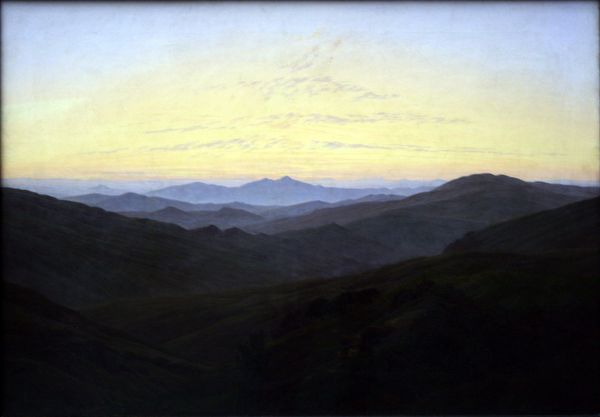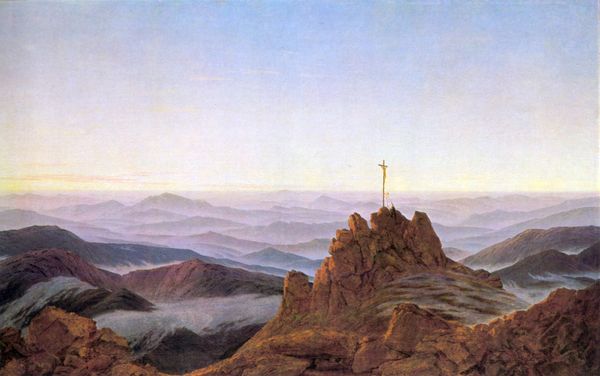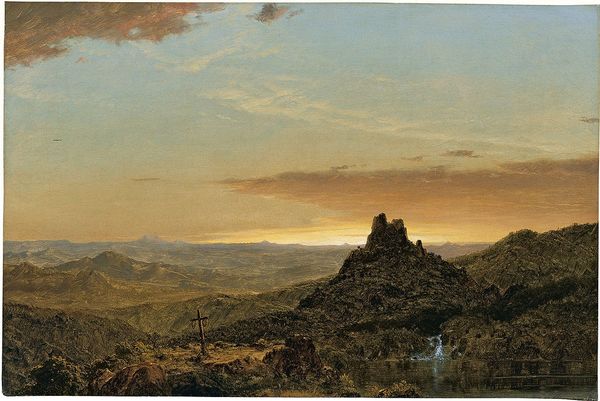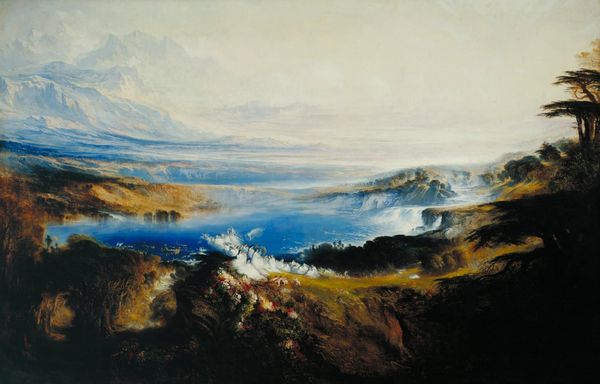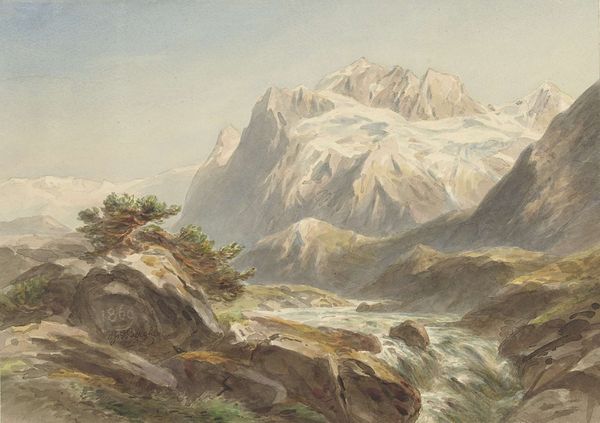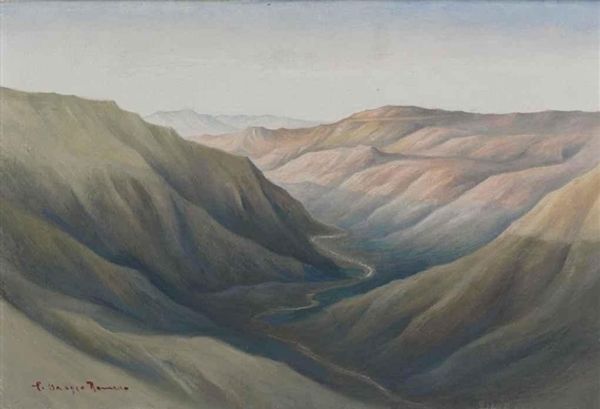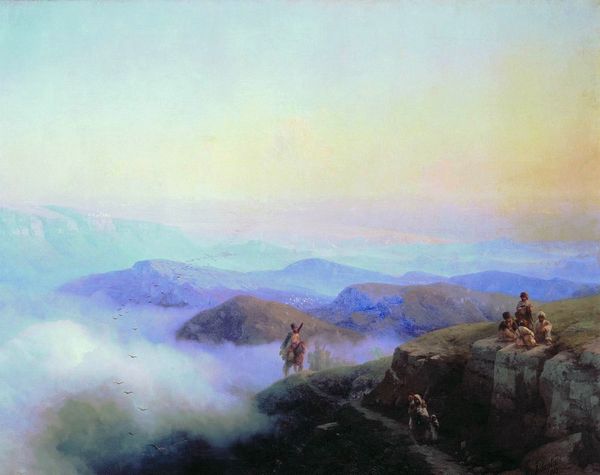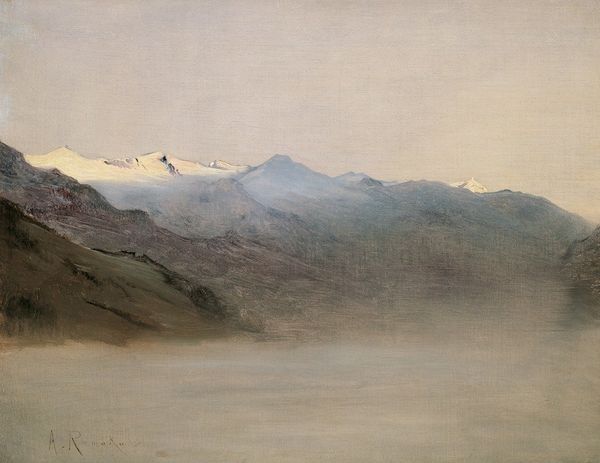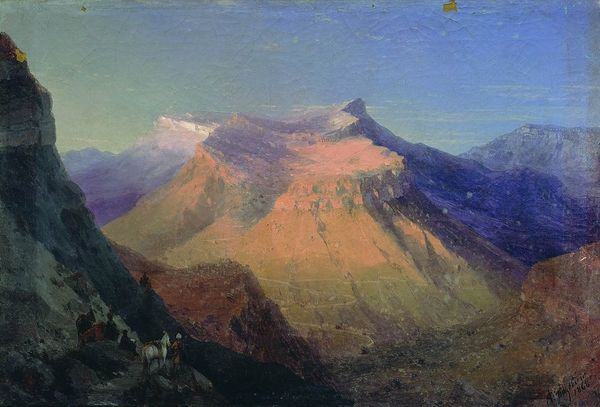
painting, oil-paint
painting
oil-paint
landscape
figuration
oil painting
romanticism
mountain
cityscape
modernism
Dimensions: 135 x 170 cm
Copyright: Public domain
Editor: This is "Morning in the Mountains," an oil painting by Caspar David Friedrich, created in 1823. The overall feeling I get is one of serenity, with the layered mountain ranges fading into a soft, misty distance. What do you see in this piece? Curator: Beyond the serene beauty, I see Friedrich engaging with complex questions of identity and place in early 19th-century Germany. Landscape painting at the time became a powerful tool for expressing national identity, particularly as a counterpoint to the Napoleonic occupation. The mountains here are not merely scenery; they represent the soul of a nation and a yearning for freedom. Who are these figures standing on the rock in the foreground? What kind of social messages do you think the painter conveys? Editor: It’s easy to miss them, they look like they're simply enjoying the view. The layers and mist contribute so much to the sublime feel. The people in the picture make it obvious that this type of nature is meant to be enjoyed by all. I wonder if that was common back then? Curator: I appreciate your perception. I wonder what is represented by their access to the space, but also the seeming insignificance, the limited impact any person has when viewing mother nature? Those could serve as both observations on societal structures and class mobility at the time, but also commentary on the human relationship to nature's power. How does knowing that shift your understanding of the painting's mood? Editor: It makes the serenity feel… less simple, weighted with this other perspective. Before it was nature's beauty but now there’s a political layer adding depth. It’s made me rethink how landscape art functions. Curator: Exactly! Seeing beyond the surface reveals the powerful dialogues artists like Friedrich initiated through their work. Now you start questioning those landscape motives with additional historical perspectives in mind, the message truly changes, doesn't it?
Comments
No comments
Be the first to comment and join the conversation on the ultimate creative platform.
